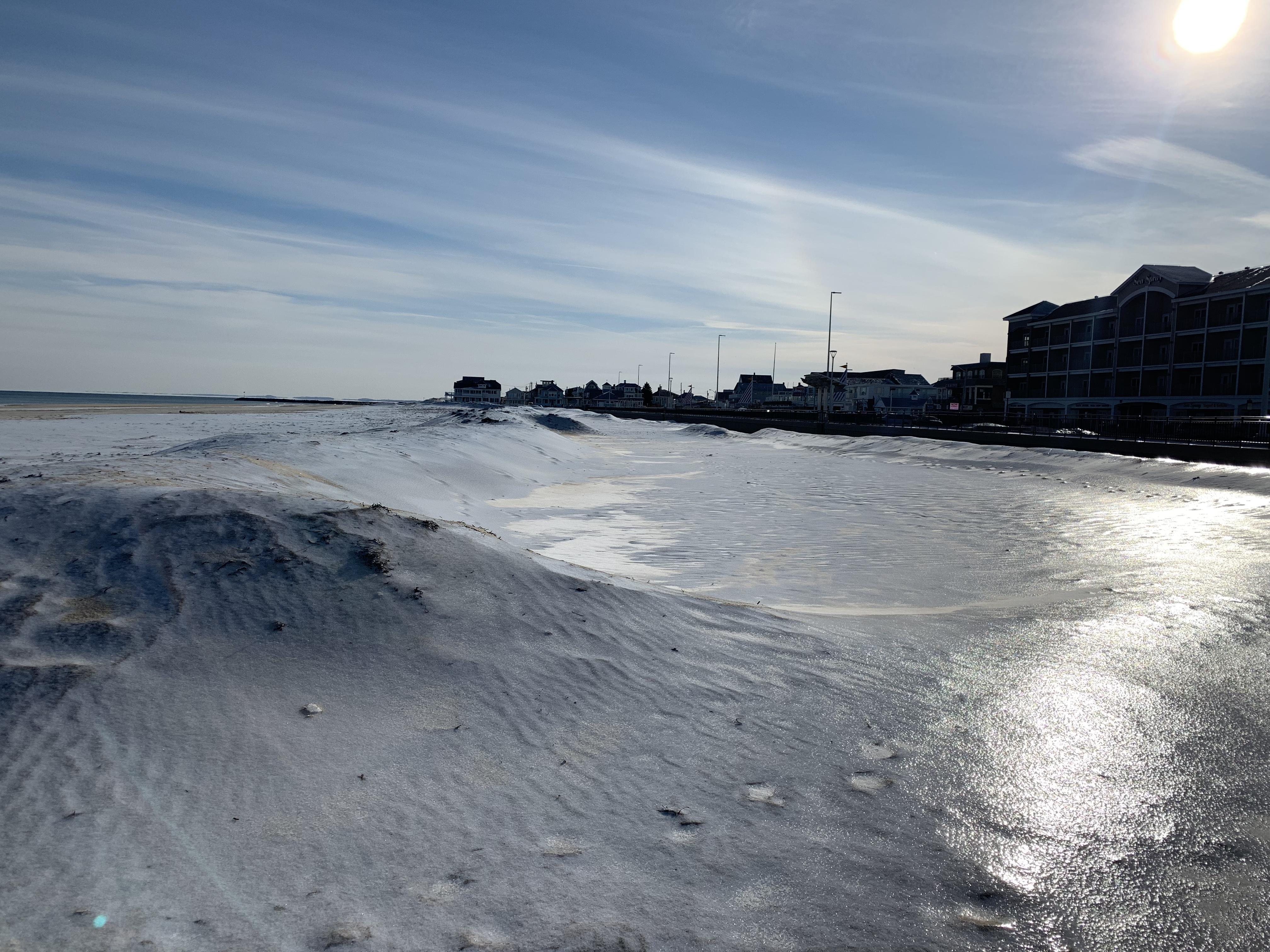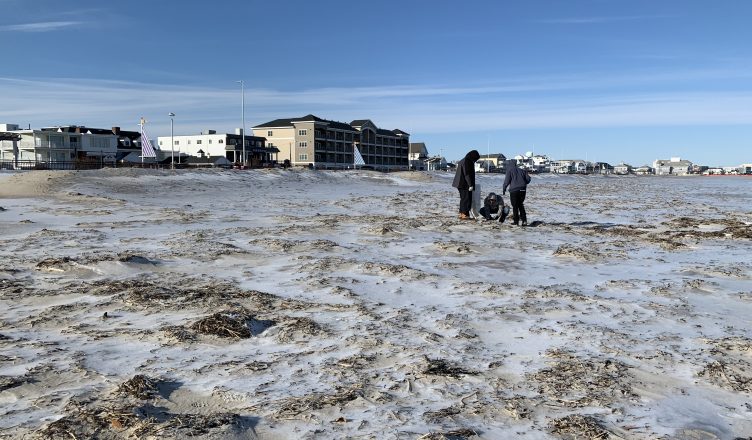Last week, I had the opportunity to lead my first winter beach cleanup with a group of enthusiastic college students from Keene who visited Hampton Beach with me as part of a class field trip.
The Keene State College students started off their field trip with talks from Abby Lyon at Piscataqua Region Estuaries Partnership (PREP) and Gabby Bradt at NH Sea Grant, hosted at the Great Bay Estuary. The class is currently working on a project to change college-aged smokers’ attitudes toward cigarette litter and elected to add a cleanup to their research to see cigarette pollution firsthand. Blue Ocean Society volunteers pick up around 30,000 cigarette butts annually from beaches in New Hampshire, northern Massachusetts, and southern Maine. One of the beaches where we see the most cigarette butts is Hampton Beach, and so the students braved the cold, snow and ice with me for an hour to help reduce this source of pollution.

A sheet of ice about half an inch thick in some spots covered Hampton’s winter sand dune barrier and stretched both toward the water and back to the sidewalk.
Carefully treading over the dunes that protect the town from high tides and winter storms, we made our way toward the water, picking up large chunks of foam blowing around the beach along the way. Large swaths of the beach had been transformed into a sandy ice skating rink by melted and refrozen snow, so we did our best to slide to the sand near the waves.

The frozen sand near the waves showed an intriguing pattern left behind by the last high tide.
Within the ice, we found cigarette butts, rope and food wrappers, and did our best to remove as much as possible. Near the water, the sand was bare yet solid, and there was minimal kelp and debris washed up on shore. We cleaned from the shore to the sidewalk for about an hour and then slid our way back to our starting point. In all, we picked up 5 pounds and one full garbage bag of marine debris, mostly made up of large foam pieces.
The commitment to keeping our oceans healthy that the Keene State class displayed was inspiring, and if you’d like to take on a winter beach cleanup as well, keep in mind the following safety tips:
- Brace for the cold: Wear layers, including warm socks to keep the sand and snow out. Consider bringing a windbreaker and/or a scarf to help protect your skin from the high winds often present on the beach.
- Boot up: Closed-toed shoes are a must for beach cleanups even during the warmer months, but when there’s snow and ice on the sand, consider hiking boots or something similar with a thick sole and lots of tread.
- Walk like a penguin: When there’s ice on the sand, things get slippery very fast. Think like a penguin to slide over the most slippery spots slowly, rather than picking your feet up high off the ground like you normally would. Watch out for ice in the parking lot and on sidewalks as well.
If you’re feeling cooped up inside this winter and need a breath of fresh air, consider participating in a winter beach cleanup! You can join us at our monthly beach cleanups at Jenness Beach every second Saturday of the month from 10:30am-12pm, and the next will be this Saturday, February 9th. Click here to see our calendar.

Even the parking lot can stay icy days after it has snowed, so take extra care when driving and walking!






